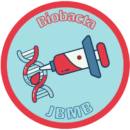Vol. 1 No. 1-5: Role of Vitamin D in Diabetes Mellitus
Mahmoud Fadl1 , Mahmoud el-rehany2, Othman Ali1
1Biochemistry Division, Chemistry Dept., Faculty of Science, Minia University, 61519 El-Minya, Egypt.
2Biochemistry Dept, Faculty of Medicine, Minia University, 61519 El-Minya, Egypt
Abstract:
Diabetes mellitus (DM) also known as simply diabetes, is a group of metabolic diseases in which there are high blood sugar levels over a prolonged period This high blood sugar produces the symptoms of frequent urination, increased thirst, and increased hunger. Untreated, diabetes can cause many complications. Acute complications include diabetic ketoacidosis and nonketotic hyperosmolar coma. Other complications of diabetes are retinopathy, nephropathy, and neuropathy. There are three main types of diabetes mellitus: Type 1 Diabetes Mellitus, Type 1 Diabetes Mellitus, and Gestational Diabetes Mellitus. The human body is continuously exposed to different types of agents that result in the production of reactive species called free radicals (ROS/RNS) which cause the oxidation of cellular machinery. To encounter the deleterious effects of such species, the body has endogenous antioxidant systems or it obtains exogenous antioxidants from the diet that neutralizes such species and keeps the homeostasis of the body. Any imbalance between the RS and antioxidants leads to a condition known as oxidative stress. Oxidative stress is increased in metabolic syndrome and type 2 diabetes mellitus Increased oxidative stress appears to be a deleterious factor leading to insulin resistance, dyslipidemia, β-cell dysfunction, impaired glucose tolerance and ultimately leading to T2DM. Approximately 30%-50% of people are recognized to have low levels of vitamin D, and insufficiency and deficiency of vitamin D are recognized as global health problems worldwide. Vitamin D deficiency has been linked to the onset and progression of DM. The link of vitamin D with insulin insensitivity or abnormal glucose metabolism gained much more scientific attention in the last decade. Several observations or associations were cited exploring the possible role of altered vitamin D status and its metabolites or altered insulin sensitivity in the pathogenesis of diabetes.
The basic aim of this review was to summarize the basics of oxidative stress in diabetes mellitus and avoid it through Vit D administration.
